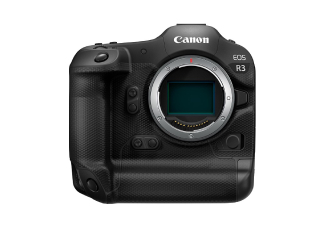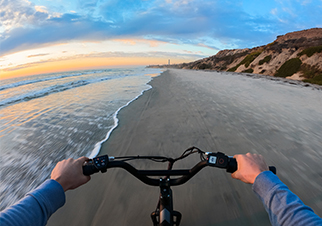On the occasion of World Photography Day, Canon India recognized and celebrated the thriving photography community and the passion that they exhibit in their work. As part of this celebration, the brand announced #BehindTheShot campaign to celebrate the sheer creativity and hard work that photographers put in their photos to bring alive the emotions and create a wider impact.
For the same, the brand showcased six renowned photography experts who came together to reflect upon their most memorable shot. They further shared their experiences on how much pain and efforts were taken to get that one perfect shot, which in the end became worth their time. Through this film, Canon India invites photography enthusiasts to come forward and share their #BehindTheShot story/images and be part of this creative journey with the brand. In addition to this, Canon India organized an online round table discussion where 7 Ace photographers came on a common platform to discuss about their passion for photography, and further address audience queries.
The brand also unveiled the latest chapter of its award-winning digital campaign #ShiftYourFocus, wherein the brand acknowledged nature’s timeless contribution to art and photography. As part of the brand’s CSR efforts, Canon India also conducted a photography workshop for 10 children from its adopted SOS Children’s Village in Faridabad, to foster the imaging culture amongst the youth. The session was undertaken by Canon India employees to educate children about photography as a profession and the basic skills required for the same in case they want to make it as a career.
Sharing his thoughts on this commemorative day, Mr. Manabu Yamazaki, President and CEO, Canon India said, “Amongst various forms of art, Photography steals the limelight of being one of the most beautiful and expressive forms of art, capable of bringing out numerous emotions to life. And what better occasion other than the World Photography Day, to admire and rejoice this art, thereby fueling the everlasting passion of photography amongst its patrons. As one of the leading brands in the imaging industry, we constantly endeavor to spread the very joy of photography across communities through all means available. To make the day larger than life, Canon India is all set to encourage the imaging culture by organizing virtual photography workshops, a live webinar with Canon Ambassadors along with social media campaigns for all the photography fanatics in the country.”
Mr. C Sukumaran, Director, Consumer System Products & amp; Imaging Communication Business, added, “We at Canon, have always believed in empowering photographers and honoring their hard work, and further spread the knowledge of photography. Our campaign #BehindTheShot is an ode to photographers and their creative genius and we want to celebrate the endless hours that they put in to make a picture perfect. We also take pride in our portfolio of cameras and lenses, which has been delivering a unique and engaging experience for photography enthusiasts across genres. To promote the growth of the industry, we endeavour to constantly evolve with the changing consumption trends and come up with industry-first innovations for our customers.”
The brand has also introduced several regional workshops and webinars to reach out to customers and cultivate the passion of photography. In the northern region of the country, Canon India reached out to 1000+ photography enthusiasts through their specially curated photography workshops and webinars led by select Canon trainers and mentors to cover themes like Film making & Cinematography, Portrait & Lighting Photography, Product and Wedding Photography, Street/ Travel Photography and an introduction of EOS R5, EOS R6 and RF lenses. In addition to this, Canon has also planned an interschool photography competition in association with Bal Bharti school, Noida which will see participation from over 100 schools.
While in the west region, Canon India has organised webinars with brand mentors including Aishwarya Sridhar, Pritesh Rao and Canon trainer conducted sessions with Symbiosis Institute, Cuncolim United Higher Secondary School and Subhash Photo respectively. In the south region, Canon conducted webinars covering topics such as food, wildlife, new-born and product photography with up to 300 participants in attendance.
In the east region, Canon conductied online webinars led by mentor Anoop Guha, for Durgapur Silpanchal Photographers and KIIT University students. Additionally, they participated in an exhibition organized by Photography Charchaa (Kolkata) and in a live demo activity organized by Dum Dum photography association.









